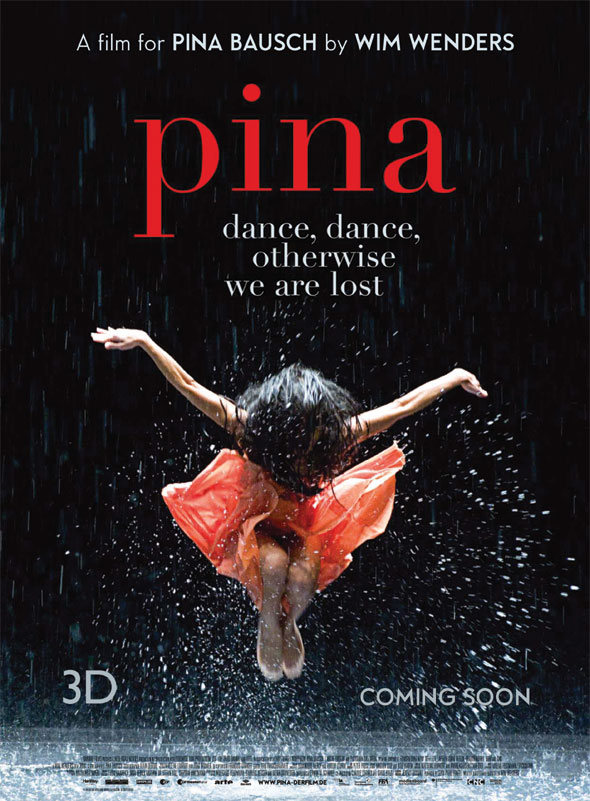One reason I love dance so much is the transcendence I feel when I watch really powerful dance. It is the feeling that somehow the bodies onstage have moved beyond being simple dancers on an elevated platform and are instead communicators of something that can’t be written or painted, but can only be communicated through the medium of physical movement. When I have this feeling I know I will once again be swept up in dance and cry or laugh or simply feel my soul reverberate.
One such great practitioner of dance passed away in 2009. Her name was Pina Bausch, and she created epic dance-theater pieces for her company in Wuppertal, Germany. Bausch’s work built itself upon the personalities of her dancers, asking them to emote theatrically in order to create meaning in movement. Her pieces were characterized by elaborate sets, including stages covered in dirt, flowers, leaves, chairs, and even rain. Her dancers were incredibly devoted to her, some staying in her company for two to three decades, investing their lives in her work. She delved into themes ranging from sex to death, heavy topics she explored through repetition, pushing both her dancers and her audiences’ comfort thresholds. She is attributed with creating the genre of tanztheater, or dance-theater. While not all loved her work, she undeniably pushed hard and said much through dance.
Wim Wenders, renowned film director, playwright, author, photographer, and producer, has long been spellbound by Bausch’s work. While he had discussed with Bausch on many occasions documenting her work, it wasn’t until the advent of 3D technology that he knew he had found the perfect medium to capture the essence of Bausch’s work on film. The resulting film, Pina, began as a collaboration between Bausch and Wenders, but after Bausch’s sudden death Wenders decided to complete the film as a tribute to her. I recently saw Pina at the recent Mill Valley Film Festival, and found it deeply touching.
The care and devotion both Wenders and the dancers have in creating a testament to their lost teacher, leader and friend is evident in every beautiful shot and scene. The film walks a fine line between trying to be representational of Bausch’s work and knowing it cannot begin to do it justice in one short film. Excerpts from some of her more famous works are interspersed with choreography taken off of the stage and out into Wuppertal. From a dancer struggling up a huge hill of dirt to a man catching a woman as she falls down steps, these moments of site-specific dance are not an attempt to change the perspective of Bausch’s choreography, which was always presented in proscenium theaters, but simply to honor the spirit of her choreography by showcasing it in different settings.
Pina left me incredibly sad, for I will never have the opportunity to see much of her work. Her pieces, with their elaborate stage sets and their dependence on the dancers’ personalities, cannot easily be reset on other dance companies. Yet somehow the ephemeral nature of her work makes it all the more special. Her company is touring for what might be the last time, and is coming to the Bay Area via Cal Performances on December 2 and 3. The piece being presented, Danzón, is a meditation on life’s trajectory through childhood and sexual awakening on into adulthood and death. This will be one of the last chances to see Bausch’s work performed with the dancers she crafted the piece on.
What little I’ve seen of Bausch’s work has left me breathless. Knowing that dance like Bausch’s exists, dance that can communicate a feeling so powerful across generations and cultures, fills me with such love and reverence for the art form. I highly recommend seeing either Pina or Danzón. See Bausch’s work one way or another. It might be the last time we can.

